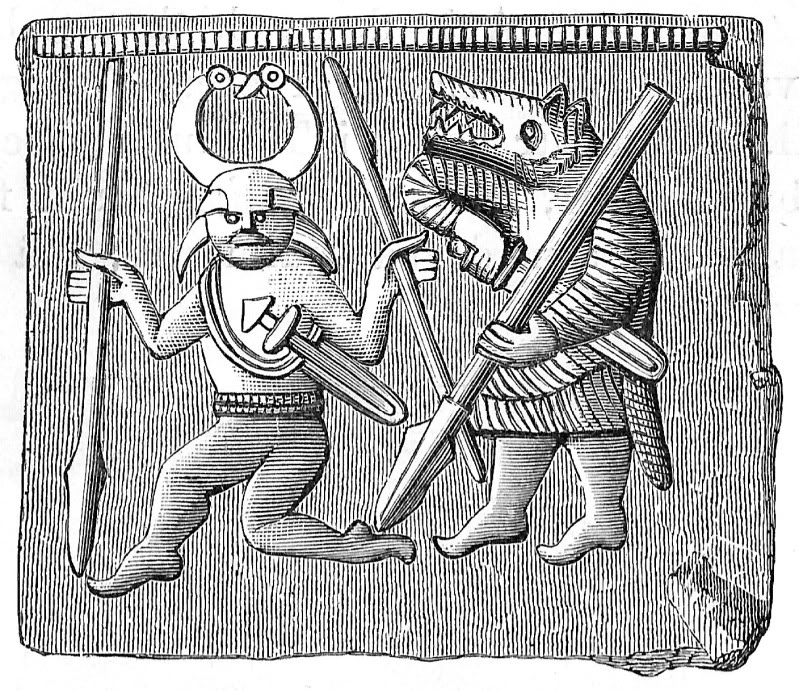The first official unified Universal Brotherhood of the Hittites (Kheta) with Egypt can be summed up with this one sentence 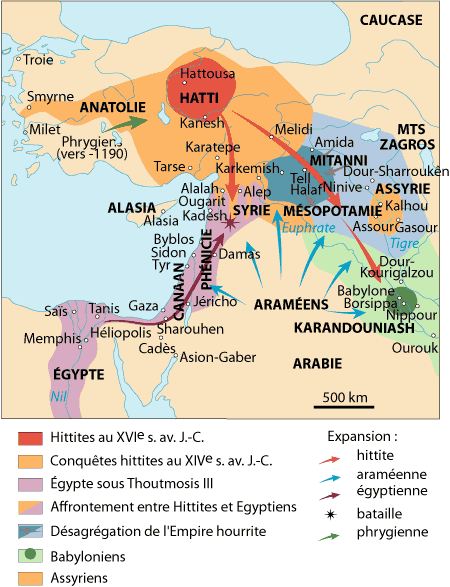 below that has echoed down through history to us by an ancient Hittite scribe who had written; “History had nothing to report of the Kheta people, but that they had one heart and one soul with Egypt” (Brugsch, Hist. Egypt, ii. 86).
below that has echoed down through history to us by an ancient Hittite scribe who had written; “History had nothing to report of the Kheta people, but that they had one heart and one soul with Egypt” (Brugsch, Hist. Egypt, ii. 86).
This statement, I have found to have magical importance to the ending of both, the Hittite and Egyptian Kingdoms, and the start of a new kingdom of people with a new destiny under the banner of a united religion. This unification of both the Egyptian and Hittite empires, is what I believe were the official beginnings of the peoples of Israel under Pharaoh Ramesses II and Hittite King Kheta Sar, prince of the Kheta.
In my last article titled “The Hittite and Egyptian Brotherhood – Part I”, I had started to detail the beginnings of this brotherhood that was started with a peace treaty concluded between Egyptian Pharaoh Ramesses II and Hittite King Hattusili III. A treaty that may very well be the forming of Israel, in where it is witnessed that the Egyptians and Hittites had made an “eternal treaty” of “peace and brotherhood for all time.”
These pledges of brotherhood and peace can be seen in the first line of this peace treaty that says, “Ramesses, Beloved of Amon, Great King, King of Egypt, hero, concluded on a tablet of silver with Hattušiliš, Great King, King of Hatti, his brother”; and later in the tablet saying, “Ramesses II agreed to provide support to Hattušiliš’ successors in order to hold the Hittite throne.”
The Hittite King’s wife was a Babylonian Princess named Puduhepa . Ramesses married this Hittite/Babylonian daughter, and conferred upon her an Egyptian name, Maathorneferure. Years later he married another Hittite princess, and from these marriages would possibly come to be a new mixed race of children that would now be known to the world as the new Israel.
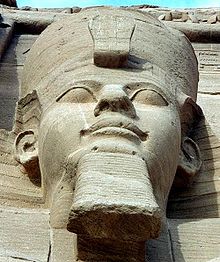 Another very important document of this reign is an Egyptian copy of a treaty between Kheta Sar, king of the Hittites, and Rameses II. (Records of the Past, O. S., iv. 25; Chabas, Voyage (Tun Egyptian, p. 333): the original—which Chabas supposes to have been in the Hittite language.
Another very important document of this reign is an Egyptian copy of a treaty between Kheta Sar, king of the Hittites, and Rameses II. (Records of the Past, O. S., iv. 25; Chabas, Voyage (Tun Egyptian, p. 333): the original—which Chabas supposes to have been in the Hittite language.
This treaty and subsequent marriages between Hittite and Egyptian Royalty had moved this Brotherhood in stone, to official brothers and sisters born in blood, and also the politics of both empires. Hence, a new bloodline and family was formed that was now “different” from the old bloodlines of the Egyptians and Hittites because the families of Ramesses and Hattušiliš’ were now unified in this one family of Israel. This is obvious based on historical accounts written in their own words.
However, when two families unite as one, that essentially leaves out the old family members who are not so privy to this blood alliance, because to put it quite simply, they were not of this mixed blood line/race and alliance. These family members knew that they were essentially being exterminated by this new alliance because their DNA was that of the old blood line, that was “not protected” or part of the new “royal alliance.” Hence, they could never become Pharaohs themselves ever again, and their dreams were essentially ended with the great peace treaty between the Egyptians and Hittites, along with the subsequent arranged marriages.
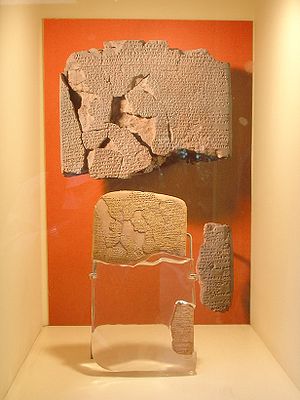 An example of what happened can be found in 1 Kings 9:20: “As for all the people who were left of the Amorites, the Hittites, the Perizzites, the Hivites, and the Jebusites, who were not of the children of Israel”
An example of what happened can be found in 1 Kings 9:20: “As for all the people who were left of the Amorites, the Hittites, the Perizzites, the Hivites, and the Jebusites, who were not of the children of Israel”
What the bible shows us with this passage, is how the alliance of the children of Israel under the new Egyptian and Hittite Brotherhood, had essentially left out all other people of Egypt or Hittite lands and made them outsiders of this newly formed brotherhood. The old outsider tribes then quickly became bitter enemies of the new insiders, and vice versa, to the point that the only solution that each other finds can easily be found many times throughout history.
The solution appears to have always been through war or genocide in the mutual extermination of the old, new and/or competing blood lines. That seem to have happened over and over again in the last 3,500 years depending on who is in power.
An example of new and old blood line rivalries can be witnessed in one of the most famous royal murders in the course of written history, and that had happened shortly after the Egyptians and Hittites had signed the eternal peace treaty and formed the new kingdom of Israel. This famous family murder plot is now over 3,000 years old, but has gained new attention with the recent release of Ramesses III‘s DNA and forensic tests, which indicate that the second Pharaoh of the Twentieth Dynasty, who was also considered to be the last great New Kingdom king to wield any substantial authority over Egypt, was ruthlessly killed in cold blood by his own son in an evil murder plot that had been planned by his own wife and royal guard.
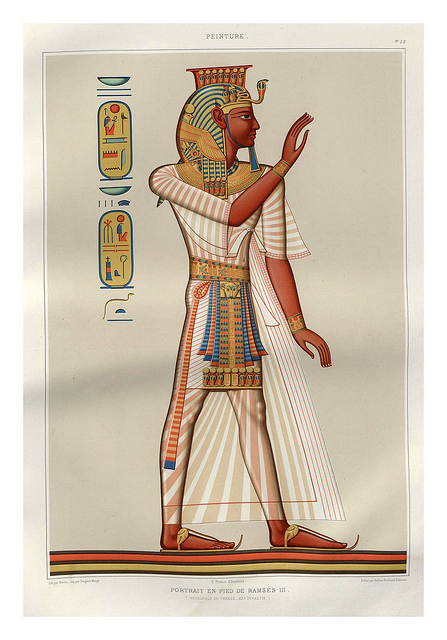 Thanks to the discovery of papyrus trial transcripts (dated to Ramesses III), it is now known that there was a plot against his life as a result of a royal harem conspiracy during a celebration at Medinet Habu. The conspiracy was instigated by Tiye, one of his three known wives (the others being Tyti and Iset Ta-Hemdjert), over whose son would inherit the throne. Tyti’s son, Ramesses Amonhirkhopshef (the future Ramesses IV) was the eldest and the successor chosen by Ramesses III in preference to Tiye’s son Pentaweret.
Thanks to the discovery of papyrus trial transcripts (dated to Ramesses III), it is now known that there was a plot against his life as a result of a royal harem conspiracy during a celebration at Medinet Habu. The conspiracy was instigated by Tiye, one of his three known wives (the others being Tyti and Iset Ta-Hemdjert), over whose son would inherit the throne. Tyti’s son, Ramesses Amonhirkhopshef (the future Ramesses IV) was the eldest and the successor chosen by Ramesses III in preference to Tiye’s son Pentaweret.
It has been proven by science via DNA, that Ramesses III was not of the same race as the previous Egyptian dynasties. Ramesses III’s father, Setnakhte (or Setnakht) was not the same race of some of all of the previous Pharaohs. Setnakhte or Set was the first Pharaoh (1189 BC–1186 BC) of the Twentieth Dynasty of the New Kingdom of Ancient Egypt, and it is widely known that Setnakhte was not the son, brother, or a direct descendant of the previous 2 pharaohs: either Twosret or Merneptah Siptah, nor that of Siptah’s predecessor Seti II, whom Setnakht formally considered the last legitimate ruler.
What may have happened shortly after the Egyptian and Hittite peace treaty, was the rise of Setnakhte (or Setnakht) or his son Ramesses III that may have been a genocidal campaign by the newly formed Israel to essentially wipe out their potential foes. This could have been one of the only ways that the new kingdom could rule or have any power. They would have to do it by force, but in doing so, they would have created eternal enemies.
The Great Harris Papyrus or Papyrus Harris I, which documents the reign of Ramesses III, provides some details about Setnakhte’s rise to power. An excerpt of James Henry Breasted‘s 1906 translation of this document is provided below:
“The land of Egypt was overthrown from without, and every man was thrown out of his right; they had no “chief mouth” for many years formerly until other times. The land of Egypt was in the hands of chiefs and of rulers of towns; one slew his neighbour, great and small. Other times having come after it, with empty years, Irsu (‘a self-made man’), a certain Syrian (Kharu) was with them as chief (wr). He set plundering their (i.e.: the people’s) possessions. They made gods like men, and no offerings were presented in the temples.
But when the gods inclined themselves to peace, to set the land in its rights according to its accustomed manner, they established their son, who came forth from their limbs, to be ruler, LPH, of every land, upon their great throne, Userkhaure-setepenre-meryamun, LPH, the son of Re, Setnakht-merire-meryamun, LPH. He was Khepri-Set, when he is enraged; he set in order the entire land which had been rebellious; he slew the rebels who were in the land of Egypt; he cleansed the great throne of Egypt; he was ruler of the Two Lands, on the throne of Atum. He gave ready faces to those who had been turned away. Every man knew his brother who had been walled in. He established the temples in possession of divine offerings, to offer to the gods according to their customary stipulations.”

Moe is the founder of GnosticWarrior.com. He is a father, husband, author, martial arts black belt, and an expert in Gnosticism, the occult, and esotericism.



